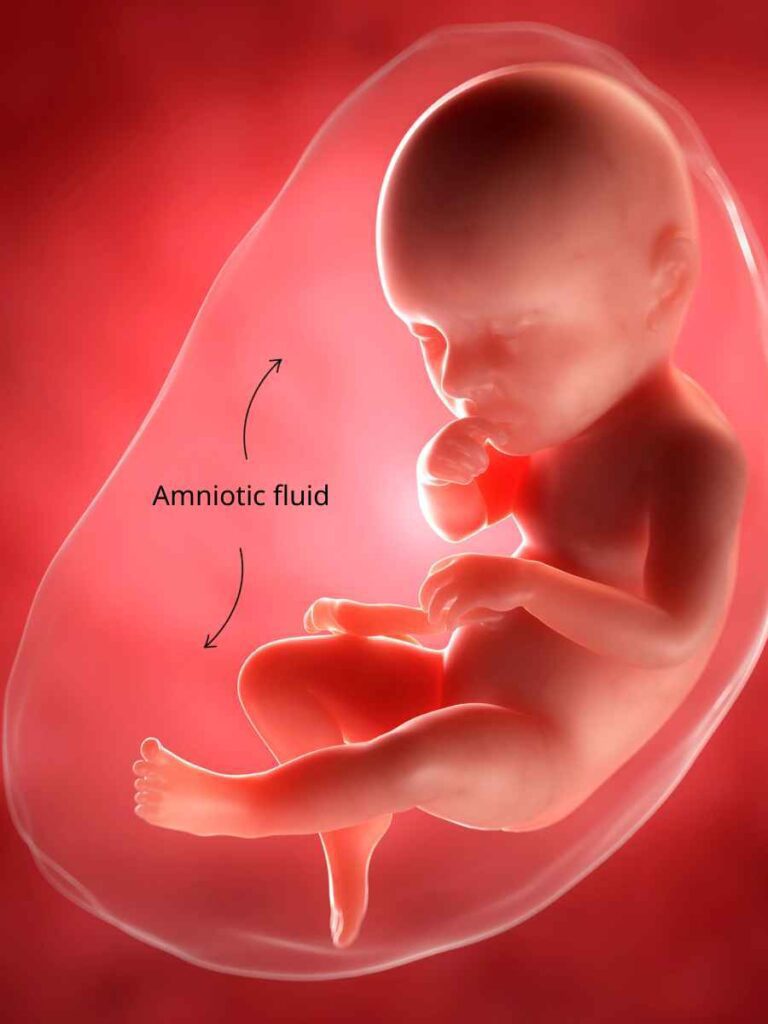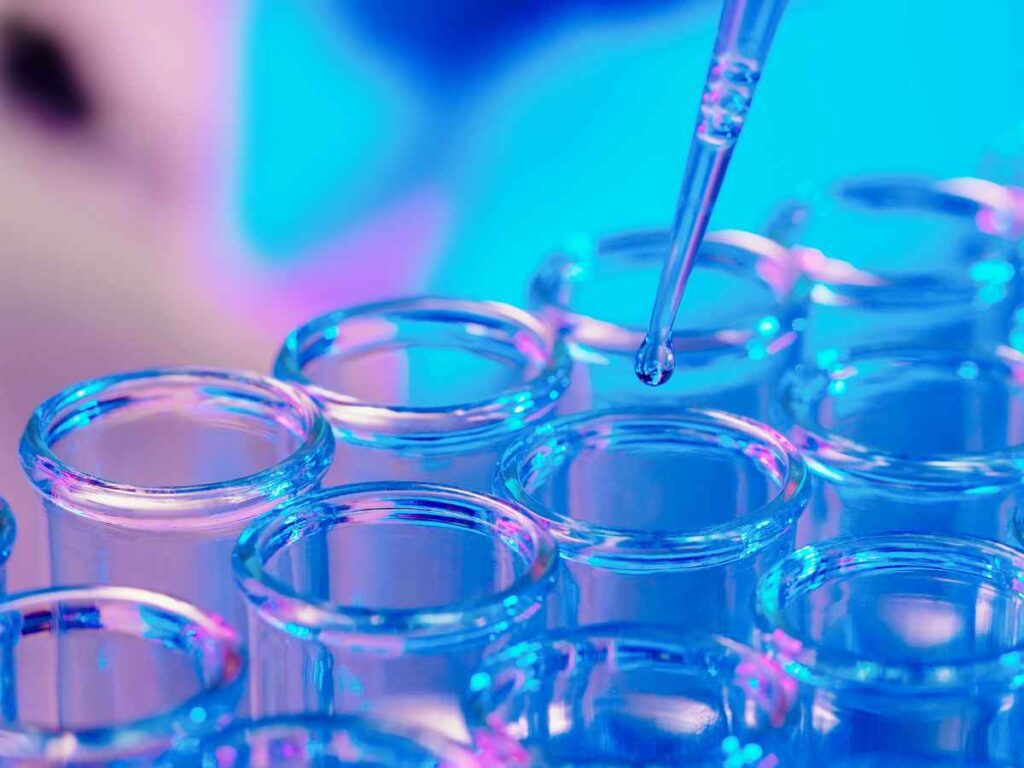Human amniotic fluid stem cells (hAFSCs) have been increasingly seen as an excellent choice for clinical application in recent years. Therefore, as an innovator in spinal cord injury and neurological disorder treatment, Verita Neuro have been using these cells for some time. Starting with a human amniotic stem cells definition, this blog post will look at why we use these cells in our epidural stimulation, LamiSpine and pure stem cell treatment protocols.
What Are Stem Cells?
Stem cells are pre-mature or primitive cells which reside in different tissues in the body. Unlike normal (or ‘somatic’) cells, they both give rise to specialized cells which perform specialized functions and retain the ability to self-renew and proliferate. They provide a steady source of cells for tissue regeneration and replenishment within the body. They are an important part of the body’s self-regenerating and healing capacity and work very closely with our immune system.
What Is Amniotic Fluid?
Amniotic fluid is a clear, slightly yellow fluid contained within the amniotic sac that protects and nourishes the fetus during the pregnancy. It starts to accumulate immediately after the amniotic sac is formed towards the end of 2nd week of pregnancy and it’s amount increases steadily until the last few weeks of pregnancy. The average volume is 270ml (about 9.13 oz) at 16 weeks which steadily increases to 400ml (about 13.53 oz) on average at about 20 weeks of pregnancy. During the 2nd half of pregnancy, the embryo begins to intake amniotic fluid and returns it into the amniotic sac through the digestive as well as the urinary tracts. The composition and dynamics of amniotic fluid varies according to the stage of pregnancy. Generally, the fluid contains proteins, carbohydrates, fats, amino acids, enzymes, hormones, pigments, and stem cells.

What Types Of Stem Cells Are There In The Amniotic Fluid?
Amniotic fluid is in contact with various embryonic components. On one side, it is in contact with the embryo’s skin and amniotic membrane, whereas on the other side it is exposed to the embryonic layers. Investigations have demonstrated that a variety of cells are present in the amniotic fluid, including a sub-type of mesenchymal stem cells.
These stem cells are taken from the amniotic fluid during 16-20 weeks of pregnancy. This is the time of rapid embryonic growth, and a reasonable amount of amniotic fluid has been formed.
What Are The Characteristics Of Human Amniotic Fluid Stem Cells?
Compared to other types of stem cells, hAFSCs are seen as superior for clinical application. Based on morphologic and growth characteristics, amniotic fluid cells can be divided into the following cell groups: epithelial (E-type), amniotic fluid (AF-type), and fibroblast (F-type). F-type cells usually appear during the late primary stage of cell culture and possess phenotypic and differentiation characteristics similar to mesenchymal stem cells (MSCs). These cells contain cell surface markers of pluripotent stem cells (including Oct-4), which are cells that can form all three of the basic body layers.
They have also been reported to possess a higher proliferation rate and the capability for differentiation into adipocytes, osteocytes, and neurons. In short, these cells are similar to mesenchymal stem cells but possess higher capacity to self-renew, or proliferate, and differentiate into different cell lines, including neurons and other neural cells.
Are There Any Ethical or Safety Issues?
Amniotic fluid is available in abundant quantities during the 2nd half of the pregnancy and is already being routinely tested for abnormalities. The procedure to collect the amniotic fluid during pregnancy is called amniocentesis. A small amount of fluid, generally 5 ml (about 0.17 oz), is collected under ultrasound guidance. Patients give informed consents for the fluid to be used for testing, research and stem cell extraction. The procedure does not have any ethical issues or risks to the fetus or the mother. Only the stem cells from healthy pregnancies are utilized for treatments. Furthermore, these stem cells go through extensive quality control checks in our GMP certified lab where they are further tested for bacterial or viral infections and toxins, fungus infections, and chromosomal abnormalities.
Human amniotic fluid stem cells (hAFSCs) are not subject to teratocarcinoma or tumour formation. This is due to the fact these cells are morphologically similar to mesenchymal stem cells but with more potential and differentiation capabilities.

How Did Verita Neuro Start Amniotic Fluid Stem Cells Treatment?
Although amniotic fluid cells were first discovered a few decades ago, it had always been a challenge to purify and culture those cells due to their rarity in the amniotic fluid. It wasn’t until 2010, when scientists discovered a unique method to purify and culture stem cells from amniotic fluid, that they became more available.
Using this method, single hAFSC cells generate colonies in a primary culture of amniotic fluid cells. Individual hAFSC colonies are then expanded by subculturing in order to make a clonal hAFS cell line – a cell population which is derived from a single cell. This method allows derivation of a substantial amount of pure stem cells within a short period of time. A reasonable amount of stem cells can be derived in two weeks using this method, where previous techniques required two months. The resultant hAFS cells show a 2-5 times greater proliferative ability than with previous techniques and a population doubling time of 0.8 days. The hAFS cells exhibit typical hAFS cell characteristics, including the ability to differentiate into different kinds of cells and maintenance of a normal karyotype (or chromosome set) over long culture periods.
Verita Neuro and its partner stem cell lab follows this unique method to purify and culture amniotic fluid stem cells. This has made it possible for us to exclusively offer this next generation stem cell treatment to our patients.
What Are The Differences Between Verita Neuro And Other Stem Cell Treatment Providers?
As aforementioned, Verita Neuro utilizes a unique purification and culture method, allowing us to generate pure and potent hAFSC cell lines in higher numbers. Thus far, we are not aware of any other treatment provider using the same methods or offering similar treatments. Moreover, amniotic fluid contains many minerals and proteins. Many treatment providers therefore offer those purified proteins from the amniotic fluid, rather than actual stem cells.
Some treatment providers also exclusively use MSCs. The key difference to note between these two different kinds of cells is their origin. MSCs come from various places, including the umbilical cord after birth, whereas hAFSCs come from the amniotic fluid. Indeed, hAFSCs are a subtype of MSCs, but since hAFCs source is very primitive at 16-20 weeks, as compared to 9 months, they have a significantly higher potential to differentiate into neural cells and proliferate as compared to umbilical cord MSCs. Umbilical cord MSCs do have their own advantages though, such as higher anti-inflammatory properties. Therefore, in many patients Verita Neuro utilizes a combination of hAFSc and MSCs to target all aspects of a condition and get maximum possible recovery. This combination is absolutely safe and there are no reported issues or risks of any interactions.
References
- Parolini, O., Soncini, M., Evangelista, M., & Schmidt, D. (2009). Amniotic membrane and amniotic fluid-derived cells: potential tools for regenerative medicine?. Regenerative medicine, 4(2), 275–291.
- Baghaban Eslaminejad, M., & Jahangir, S. (2012). Amniotic fluid stem cells and their application in cell-based tissue regeneration. International journal of fertility & sterility, 6(3), 147–156.
- Brace RA, Resnik R.(1999) Dynamics and disorders of amniotic fluid: maternal Fetal medicine.Philadelphia: Saunders;623-643.
- Modena, A. B., & Fieni, S. (2004). Amniotic fluid dynamics. Acta bio-medica : Atenei Parmensis, 75 Suppl 1, 11–13.
- Seeds A. E. (1980). Current concepts of amniotic fluid dynamics. American journal of obstetrics and gynecology, 138(5), 575–586.
- Albuquerque, C. A., Nijland, M. J., & Ross, M. G. (1999). Human and ovine amniotic fluid composition differences: implications for fluid dynamics. The Journal of maternal-fetal medicine, 8(3), 123–129.
- Fauza D. (2004). Amniotic fluid and placental stem cells. Best practice & research. Clinical obstetrics & gynaecology, 18(6), 877–891.
- Phermthai, T., Odglun, Y., Julavijitphong, S., Titapant, V., Chuenwattana, P., Vantanasiri, C., & Pattanapanyasat, K. (2010). A novel method to derive amniotic fluid stem cells for therapeutic purposes. BMC cell biology, 11, 79.
- Bennett R. (2005). Genetic Disorders and the Fetus: Diagnosis, Prevention and Treatment. American Journal of Human Genetics, 77(5), 896–897.
- Hoehn, H., & Salk, D. (1982). Morphological and biochemical heterogeneity of amniotic fluid cells in culture. Methods in cell biology, 26, 11–34.
- Gosden C. M. (1983). Amniotic fluid cell types and culture. British medical bulletin, 39(4), 348–354.
- In ‘t Anker, P. S., Scherjon, S. A., Kleijburg-van der Keur, C., Noort, W. A., Claas, F. H., Willemze, R., Fibbe, W. E., & Kanhai, H. H. (2003). Amniotic fluid as a novel source of mesenchymal stem cells for therapeutic transplantation. Blood, 102(4), 1548–1549.
- Tsai, M. S., Lee, J. L., Chang, Y. J., & Hwang, S. M. (2004). Isolation of human multipotent mesenchymal stem cells from second-trimester amniotic fluid using a novel two-stage culture protocol. Human reproduction (Oxford, England), 19(6), 1450–1456. https://doi.org/10.1093/humrep/deh279
- Prusa, A. R., Marton, E., Rosner, M., Bernaschek, G., & Hengstschläger, M. (2003). Oct-4-expressing cells in human amniotic fluid: a new source for stem cell research?. Human reproduction (Oxford, England), 18(7), 1489–1493.







